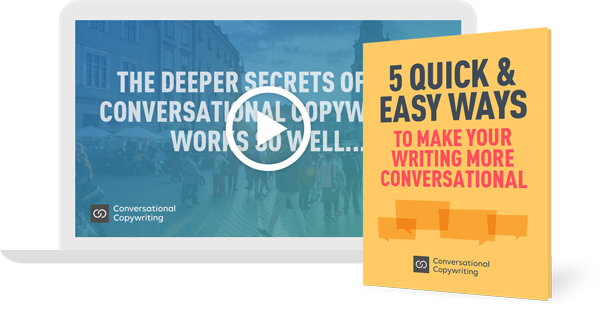
Stories and conversations are deeply intertwined.
Walk into a bar or coffee shop, find a group of people deep in conversation, and chances are they’ll be sharing stories.
“Do you remember the time when…?”
“Did you hear about what happened to Jack at the weekend…?
“You’ll never guess who I saw on the bus this morning…”
When we gather together in groups, we’re always telling stories.
In fact, the stories we’re being told give us a good clue as to whether we’re with the right group of people or not.
Walk into a bar on one side of town and you’ll hear stories being told that are very different to the stories being shared on the other side of town.
Put another way… the stories being shared by a group of farmers are unlikely to be the same as those being shared by a group of investment bankers.
With the right story, you’re telling your audience, “You can trust us, because we’re like you.”
Some companies are really good this. Others, not so much.
If you’re selling farm equipment, for example, you’d do well to find writers who have some familiarity with farming.
They’ll be able to tell stories farmers are familiar with.
Stories that will make them smile.
Stories that are engaging and disarming.
Stories that build trust.
Once you have anchored a relationship with one or two good stories, you’re in a better position to continue the conversation and move towards making a sale.
Stories stick in our memories too…
As well as being a fast way to engage attention and build trust, stories are also memorable.
Think back to when you were at high school.
How much do you remember from your textbooks?
How about the information your teachers wrote up on the board?
Or maybe you can remember the questions from some of those big, important exams you took?
No? Barely anything?
That’s OK. We all forget that stuff.
But how about stories?
If you’ve ever been to a school or college reunion, I bet you and your friends can remember a ton of stories from your high school days.
Go back further and you’ll find you can remember a lot of the stories your parents read you at bedtime.
Stories are super-powerful and memorable.
Relatable stories are told in conversational language.
The fastest way to engage any audience of prospects in conversation is to tell stories they can relate to.
A relatable story is like a passport. It gets you past the border into a place of trust. Stories help you jump the line too. You get into that place of trust a whole lot faster.
But if you want people to be able to relate to your story, you have to tell it in everyday, conversational language. In the kind of language they use themselves.
You can’t tell a good story if you sound like a hard-charging salesperson.
And your story will definitely fall flat if you’re talking in formal business language.
Good stories are told in regular, conversational language. One person to another.
In other words… selling with stories and selling through conversational language or closely intertwined.
They are two parts of the same process.
As it happens, I have courses on both conversational copywriting and selling with stories…
If you’re reading this blog, you know I write a lot about conversational copywriting. And you doubtless know I offer a course for writers and business people who want to learn the craft of conversational copywriting.
But you may not know that I also offer a course on Selling with Stories.
In fact, the course on selling with stories came first.
It was the creation of that course that inspired me to explore the broader role of conversational writing in the world of marketing.
Take one or both courses, in no particular order…
If you believe that a conversational approach to sharing stories can help you in your business… then both these courses would be of help.
Take either course, or both.
And I don’t think it matters too much in which order you take them. Although if you were to ask my advice, I’d recommend you take the curse on Conversational Copywriting first.
Not a huge deal. But that’s what I’d suggest.
Either way, I hope you decide to join us.

I’m wondering how many people have taken the curse on Conversational Copywriting so far? (Please see the following in your blog post…
“And I don’t think it matters too much in which order you take them. Although if you were to ask my advice, I’d recommend you take the curse on Conversational Copywriting first.”)
Hi Nick,
I already mentioned Dorothy Sayers in my previous comment. Dorothy Sayers and Dorothy L. Sayers are the same person. Her middle initial is L. Reading her mystery stories as a teenager introduced me to the world of copywriting. I always knew copywriting existed, but didn’t really know what it was all about until I started studying copywriting myself.
I also forgot to mention that Jay White uses story telling when he writes his email copy.
You can add Bob Newhardt to that list, although he became an actor in televised fiction stories and not an author of fiction. I’m sure there are many other authors who started out as copywriters before writing their novels or non-fiction writing that I can’t think of right now.
Many well-known fiction writers like James Patterson and Dorothy L. Sayers started out as professional copywriters. After studying copywriting, I can see how they were able to transfer their copywriting skills to telling stories in the published fiction books they have written in the mystery and suspense categories.
Not to mention F. Scott Fitzgerald, Dorothy Sayers, Joseph Heller and Salman Rushdie!
Wow! I didn’t know that!! These writers are my heroes. Maybe the future is bigger than I’ve been seeing. And copywriting is already a big world.
Thanks, Nick and Sheila! This made my day.